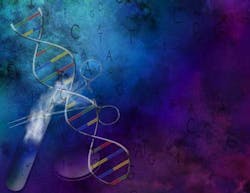Streptococcus mutans has accelerated a change in its genetic material over time, possibly coinciding with dietary change
The research, published in Proceedings of The Royal Society B, studied the bacterium in 11 individuals from the Bronze Age up to the 20th century, in Europe and in pre- and post-colonial America. The oldest case was from an individual from a burial cave in Montanisell (Lleida, Catalonia) dating from 1200 BC. The most recent case was from the UAB collection, dating from the beginning of the 20th century. (2)
The hope is that this study will offer evidence for the historical relationship between caries and humans, as well as determining ways in which distinct historical moments may have been impactful. Also, based on this evidence, it may be possible to reconstruct the dietary habits of ancient peoples. (2)
Read the abstract: “Molecular analysis of ancient caries”; Proceedings of The Royal Society B | Biological Sciences.
Previous analysis of DNA from tartar preserved on the teeth of ancient skeletons has revealed the consequences of the changes in human diet as scientists study people from the Stone Age to the present day. “Oral bacteria in modern man are markedly less diverse than historic populations, and this is thought to contribute to chronic oral and other diseases in post-industrial lifestyles.” (3)
Scientists continue to learn about the dietary habits of our ancestors. By taking this knowledge and analyzing it against what they know about science, they can assemble these pieces to learn more about how science can be used to improve the oral-systemic health of present-day human life. In a sense, it's circular. One thing builds on another, and thus the boundaries of dentistry continue to expand.
ADDITIONAL READING…
New study reveals periodontal disease pathogen Porphyromonas gingivalis associated with increased risk of atherosclerosis
Ancient tooth decay DNA reveals effects of changing diets
Teeth like a guillotine: How the fork created the overbite
References
1. Ancient genetic material from caries bacterium obtained for the first time. ScienceDaily. July 23, 2014.
2. Simon M, Montiel R, Smerling A, Solorzano E, Diaz N, Alvarez-Sandoval BA, Jimenez-Marin AR, Malgosa A. Molecular analysis of ancient caries. Proceedings of the Royal Society B: Biological Sciences, 2014; 281(1790):20140586 DOI:10.1098/rspb.2014.0586.
3. Ancient tooth decay DNA reveals effects of changing diets. DentistryIQ. Feb. 2013.
About the Author
Vicki Cheeseman
Associate Editor
Vicki Cheeseman is an associate editor in Endeavor Business Media’s Dental Group. She edits for Dental Economics, RDH, DentistryIQ, and Perio-Implant Advisory. She has a BS in mathematics and a minor in computer science. Early on she traded numbers for words and has been happy ever since. Vicki began her career with Dental Economics in 1987 and has been fascinated with how much media production has changed through the years, yet editorial integrity remains the goal. In her spare time, you’ll find her curled up with a book—editor by day, reader always.


